Chemical Geography
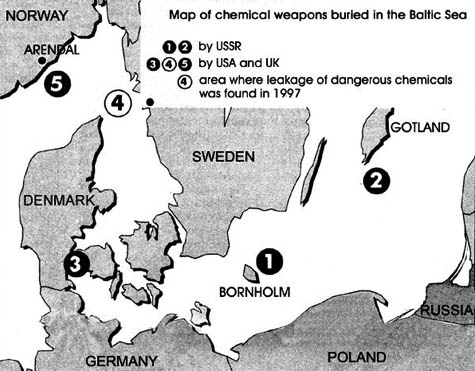 [Image: Chemical weapons dumping sites in the Baltic Sea; via].
[Image: Chemical weapons dumping sites in the Baltic Sea; via]."The last thing you might expect to encounter exploring the ocean floor is a chemical weapon," New Scientist writes. "But it seems hundreds of thousands of tonnes of them have been dumped into the sea, and no one knows exactly where the weapons are. Now, scientists are calling for weapons sites to be mapped for safety's sake."
- Between 1946 and 1972, the US and other countries pitched 300,000 tonnes of chemical weapons over the sides of ships or scuttled them along with useless vessels...
But the military have lost track of most of the weapons because of haphazard record keeping combined with imprecise navigation. Even the exact chemicals were not always noted, though there are records of shells, rockets and barrels containing sulphur mustard and nerve agents such as sarin.
Of course, it's not always chemical weapons that get scuttled at sea.
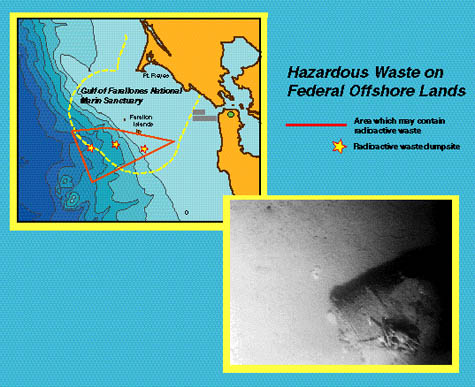 [Image: Via the USGS].
[Image: Via the USGS].According to the United States Geological Survey:
- Between 1946 and 1970, approximately 47,800 large barrels and other containers of radioactive waste were dumped in the ocean west of San Francisco. The containers were to be dumped at three designated sites, but they litter a sea floor area of at least 1,400 km2 known as the Farallon Island Radioactive Waste Dump.
The exact location of the containers and the potential hazard the containers pose to the environment are unknown.
Somewhat ominously, at least from my perspective, the Farallon Islands are a short sail west by northwest from the neighborhood in which I'm writing this; on clear days you can even see them while hiking on the coast of Marin County.
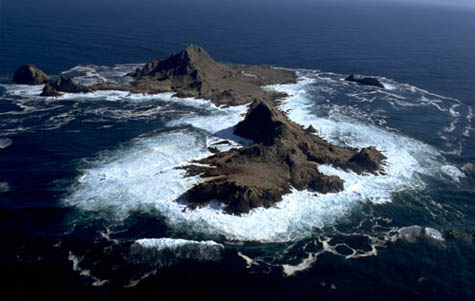 [Image: The Farallon Islands, via NOAA].
[Image: The Farallon Islands, via NOAA].The radioactive history of the Farallons is actually quite extraordinary.
In 2001, for instance, SF Weekly suggested that "the Navy dumped far more nuclear waste than it's ever acknowledged in a major commercial fishery just 30 miles west of San Francisco."
The Weekly then relates the story of a man named Jim Gessleman. "Part of his regular job," we read, in reference to Gessleman's time in the Navy between 1955 and 1959, "was to escort a barge carrying radioactive waste under the Golden Gate Bridge and out into the Gulf of the Farallones. There, the bottom of the barge would open to release containers of radioactive waste into the sea." Horrifically: "Another part of Gessleman's job was to shoot holes in the barrels that didn't immediately sink, so that they would. He says he did his job – shooting about 10 to 20 barrels once or twice each week – which means that many of the Navy's radioactive waste containers were breached before they ever reached the bottom of the sea, and became part of what is known as the Farallon Islands Nuclear Waste Site."
So what exactly is down there? The short answer is that no one seems to know. But, among many other things, including the entire U.S.S. Independence, we can be sure that "significant amounts of the nuclear bomb component plutonium, which has a half-life of 24,000 years, and similarly long-lived 'mixed fission' products," are all floating around down there in the darkness.
And perhaps it's all now billowing in a red tide near you...
In fact, later researchers, studying this undersea dumping ground within sight of the mansions and bank towers of San Francisco, "found plutonium, cesium, and americium – an isotope that emits about three times as much radioactivity as radium – in the fish [caught on-site]. In particular, americium and one kind of plutonium were found at levels higher than has been reported at any other site in the world" (emphasis in original).
As it now stands, however, "approximately 85 percent of the nation's largest undersea nuclear waste dump has never been observed or tested."
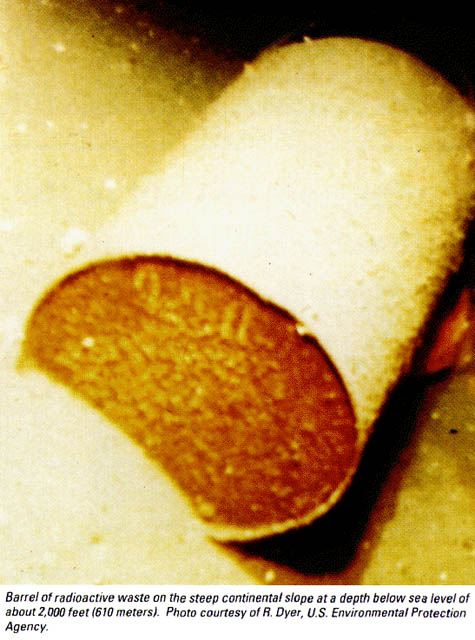 [Image: Via the USGS].
[Image: Via the USGS].Returning to the question of chemical weapons at sea, a report by Environmental Science & Technology explains that an area roughly the size of Delaware has been used off the coast of California as a dumping ground for non-nuclear chemical weaponry. Yet the U.S. military hasn't limited itself to its own sovereign shores. From the Daily Press in 2005:
- The Army now admits that it secretly dumped at least 64 million pounds of chemical warfare agents, as well as more than 400,000 mustard gas-filled bombs and rockets, off the United States – and much more than that off other countries, a Daily Press investigation has found.
The Army can't say where all the dumpsites are. There might be more.
The Army is missing years of records on where it secretly dumped surplus chemical weapons from the close of World War II until 1970, when the practice was halted. It hasn't reviewed any records of post-World War I at-sea chemical weapons dumping but knows the practice was commonplace at the time.
More than 30 U.S.-created chemical weapon dumpsites are scattered off other countries, the newly released Army report indicated.
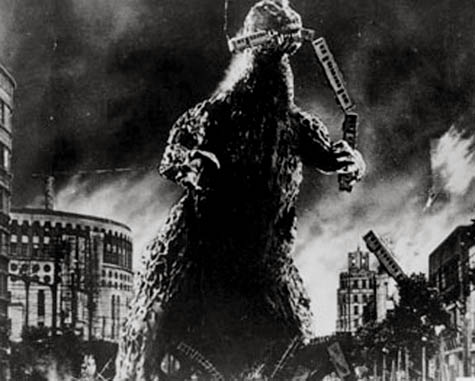 And, whether or not anything of the sort ever happens, is there really any way to produce an accurate map of these and other dumping sites? Things shift; barrels move; information is lost; sand can cover everything. And even that assumes you'd get the funding you need to buy equipment – from side-scanning radar to air tanks and wet suits.
And, whether or not anything of the sort ever happens, is there really any way to produce an accurate map of these and other dumping sites? Things shift; barrels move; information is lost; sand can cover everything. And even that assumes you'd get the funding you need to buy equipment – from side-scanning radar to air tanks and wet suits. Still: what future cartography might yet detect and publish these places – so that we can avoid them, or clean them, or entomb them there beneath the sea in glaciers of black concrete?
Of course, even those glacial tombs will someday tectonically re-emerge, or crack, or seismically collide with other landmasses, spilling open – and, at least in the case of radiation, creatures tens of thousands of years from now – far longer than the recorded history of human civilization – might yet find a mysterious sickness, drifting invisibly through the water, from a source that's lost to time.
[Belated thanks to Steve S. for originally mentioning the Farallon Islands story].





Comments are moderated.
If it's not spam, it will appear here shortly!
In the case of radioactive metals, aren't they so heavy that if they leach from their barrels, they will sink through the muck until they reach bedrock, and then over many years work their way downwards towards valleys or the continental shelf? In that case it would seem critical that no one be allowed to anchor or dredge in that area, or in the downstream flow areas.
Interesting article. Your third image, however, is of the Farallones on Capri, not the ones off of San Francisco.
Your third image, however, is of the Farallones on Capri, not the ones off of San Francisco.
Oops - kind of funny, though. I'll swap it out for something...
Fixed the image - thanks!!
Unbelievable. Doesn't this qualify as a crime against humanity?
and I'm guessing that there is no program in the works to clean up any of this mess? Or are all of the programs designed more or less to just track the mess where it has fallen. It's a fantastic legacy to leave to your kids, grandkids, great grand kids and their great grand kids. Why do people still have kids if their willing to do this?
It brings me to wonder if we'll ever be mining our 'wastelands', be they landfill sites, and old dumping grounds (or waters) for resources that are becoming harder to find for mining purposes.
"In the case of radioactive metals, aren't they so heavy that if they leach from their barrels, they will sink"
Nope. You are very wrong. Some small percentage of these metals would form salts and otherwise dissolve in the water.
There is about 50 grams of gold dissolved in every cubic mile of seawater.
Gold is one of the least reactive metals. Far more plutonium would dissolve.
Imagine 50 grams of plutonium dissolved in every cubic mile of seawater.
Post a Comment